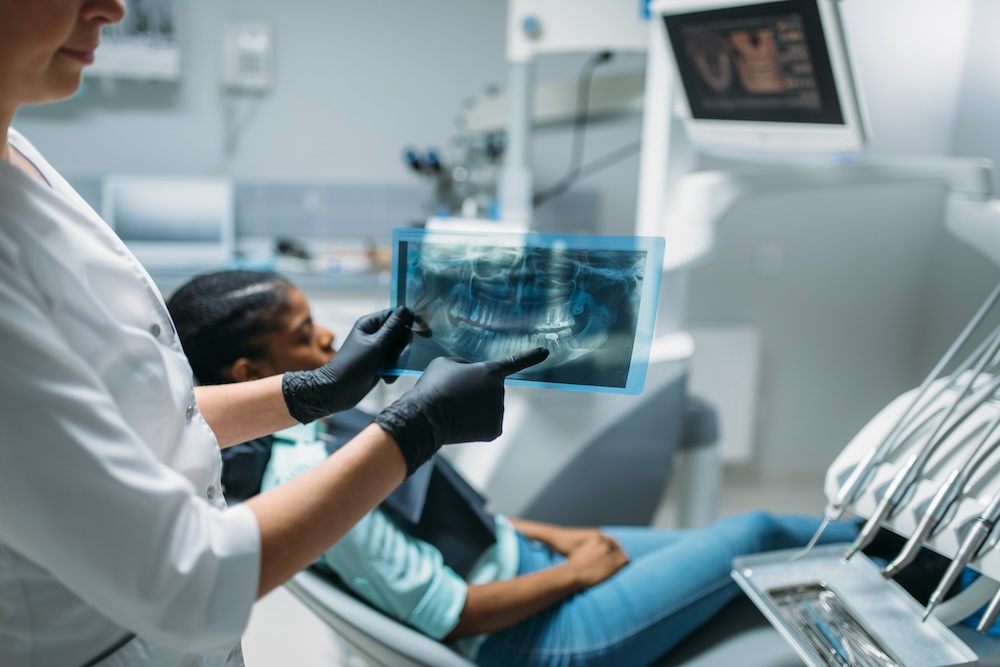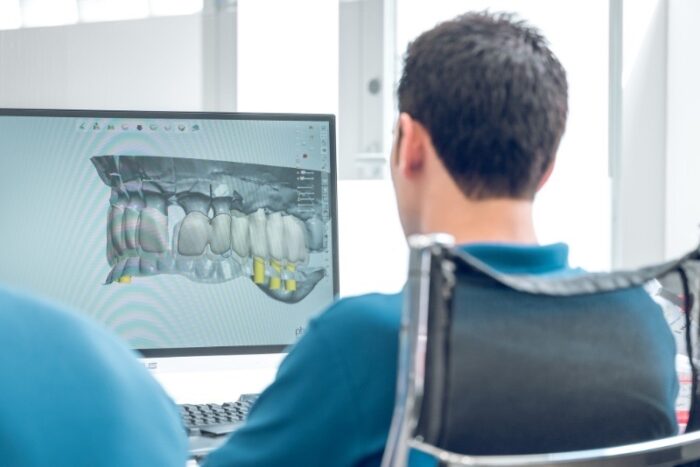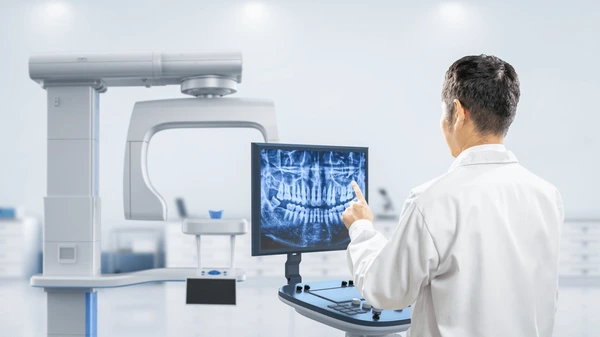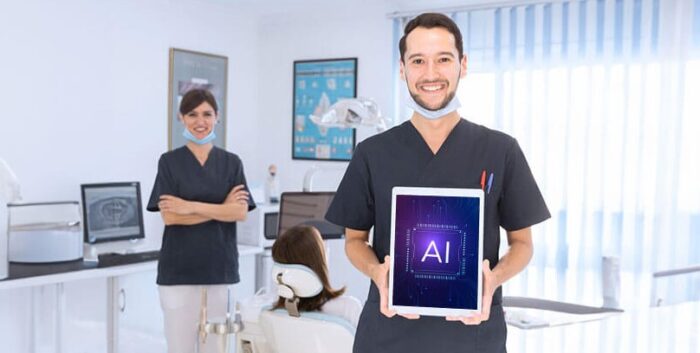
In modern dentistry, automation has become the backbone of efficient patient care. The concrete benefit is clear: automation minimizes administrative errors, saves clinical staff hours each week, and ensures accurate, compliant, and accessible dental records. A clinic that integrates digital workflows can cut documentation time by 30–50% while improving the reliability of patient data. From scheduling to treatment notes and insurance submissions, automation turns what was once tedious clerical work into a streamlined, transparent system that benefits both patients and providers.
The Shift from Paper to Digital Precision

Traditionally, dental record management depended on handwritten charts, paper x-rays, and manual filing systems. Every chart update or patient transfer required staff to re-enter or copy information—creating a high risk of transcription errors and misplaced documents.
Automation eliminates that friction. Electronic Health Records (EHR) systems now automatically organize, timestamp, and secure all clinical data in real time. When a hygienist completes a cleaning, the treatment code, notes, and radiographs instantly attach to the patient’s digital chart. If the patient moves to another clinic, their records transfer securely with a few clicks. This not only improves continuity of care but also protects data integrity across the patient’s lifetime.
Reducing Human Error and Data Loss

Manual record-keeping is vulnerable to mistakes—misspelled names, incorrect procedure codes, or inconsistent progress notes. In a clinical setting where accuracy determines treatment outcomes and insurance compliance, such errors can be costly.
Automated dental software uses validation rules and real-time cross-checks to prevent these problems. For instance, when entering a restorative procedure, the system ensures that the correct tooth number and surface are selected. If a treatment note is incomplete, the software prompts the provider before saving. Cloud-based systems also back up data continuously, protecting clinics from loss due to hardware failure or accidental deletion.
This automated safety net means fewer denied insurance claims, reduced rework, and a consistent, audit-ready data trail.
Improving Compliance and Security
Every dental practice must comply with regulations such as HIPAA in the U.S. or GDPR in Europe. Automation strengthens compliance by controlling how data is stored, accessed, and transmitted.
Automated systems can log every access point, showing who viewed or edited a file and when. They encrypt records during both storage and transmission, reducing the chance of unauthorized access. Multi-factor authentication and role-based permissions ensure that only licensed staff can modify clinical data.
Moreover, automation helps generate compliance reports automatically, removing the need for manual audits and simplifying inspections or insurance verifications.
Integrating Imaging, Charting, and Billing

The modern dental office runs on multiple systems—digital x-rays, charting software, appointment scheduling, and billing platforms. Without automation, these often operate as isolated silos.
Automation connects them into a unified ecosystem. When a radiograph is taken, the image automatically attaches to the patient’s chart. The dentist’s charting notes then sync with the billing module to generate accurate procedure codes and insurance claims.
This integration drastically reduces redundancy and administrative overhead. Staff no longer have to manually input codes or double-check that x-rays match the right visit. Patients benefit from faster billing cycles and fewer errors in their insurance submissions.
Enhancing Clinical Decision-Making
Automation doesn’t just organize data—it helps dentists interpret it. Modern systems can analyze treatment histories, radiographs, and appointment patterns to generate useful insights.
For example, predictive analytics tools can flag patients due for recall visits or those showing early signs of periodontal disease based on past chart data. Automated dashboards visualize production metrics and treatment outcomes, giving clinic managers a real-time overview of performance.
These insights guide better decisions—when to schedule staff, which treatments generate the highest success rates, or how to improve preventive care outreach.
The Role of AI in Dental Record Management

Artificial intelligence (AI) is taking automation in dentistry one step further. AI tools can now analyze dental images, recognize caries or bone loss, and automatically document findings in the patient record. This reduces diagnostic inconsistencies between practitioners and enhances clinical objectivity.
AI-driven automation also helps organize unstructured data. For instance, if a dentist dictates notes verbally, speech recognition software can convert them into structured text fields that integrate seamlessly with patient charts. Over time, the system learns from each entry to improve accuracy.
A good example of this evolution can be seen in modern platforms like Trust AI, which focus on bridging human expertise and data-driven intelligence. These systems don’t replace clinicians but enhance their efficiency by ensuring every note, x-ray, and patient record is complete, consistent, and instantly retrievable. The result is a smoother workflow, better compliance, and more time for patient interaction rather than paperwork.
Streamlining Insurance and Administrative Tasks
Billing errors are among the most common inefficiencies in dental offices. Automation addresses this by auto-filling claim forms, validating coverage, and cross-checking procedure codes with insurer databases. When a dentist completes a treatment, the billing system can instantly generate a claim and send it electronically.
Administrative automation extends further to appointment reminders, consent forms, and digital intake questionnaires. Patients can update their information online before visits, and the data flows directly into the dental record—no need for staff to retype handwritten forms.
This seamless workflow minimizes delays, reduces staff stress, and enhances the overall patient experience.
Patient Transparency and Engagement
Automation also empowers patients. Digital portals allow individuals to view their treatment history, sign consent forms, pay bills, and access educational resources. When patients see real-time updates and accurate treatment records, trust naturally increases.
Clinics using automated communication systems report higher appointment retention and lower no-show rates. Personalized reminders and follow-up messages based on treatment data create a more engaged patient community—without burdening staff with repetitive communication tasks.
Midpoint Summary: Why Automation Truly Matters
In concrete terms, automation transforms dental record management from a passive storage function into an active engine of clinical efficiency. The direct benefits are measurable:
- Up to 50% reduction in administrative workload
- 30% faster billing and insurance claims
- Significant drop in human input errors
- Improved compliance reporting
This isn’t theoretical—it’s already happening in digital-first dental practices. Automation gives dentists better control over their operations while allowing them to focus on what matters most: patient care.
Preparing for the Future of Digital Dentistry
As cloud computing, AI, and interoperability standards evolve, automated record management will become the norm rather than the exception. Clinics that adopt these systems early will not only save costs but also future-proof their operations against regulatory, technological, and market shifts.
However, successful implementation requires a strategy. Automation works best when paired with well-trained staff, clear workflows, and robust cybersecurity measures. Periodic audits and user feedback loops help fine-tune systems to meet each clinic’s specific needs.
Final Thoughts

Automation in dental record management is not about replacing people—it’s about empowering them. By removing repetitive manual work, automation lets dentists, hygienists, and administrative staff spend more time on patient care and less on paperwork. It ensures accuracy, compliance, and long-term data security, transforming clinical records into valuable, actionable assets.
The dental industry is rapidly entering a new era where data isn’t just stored—it’s understood, connected, and utilized intelligently. Clinics that embrace automation today will be the ones setting the standard for care tomorrow.














